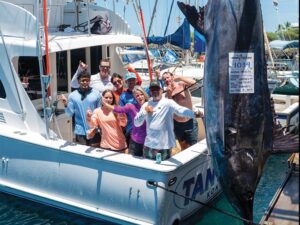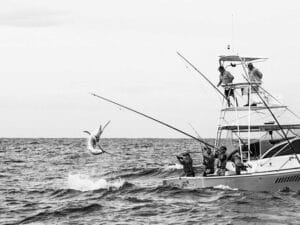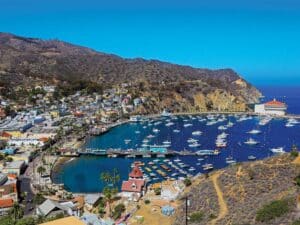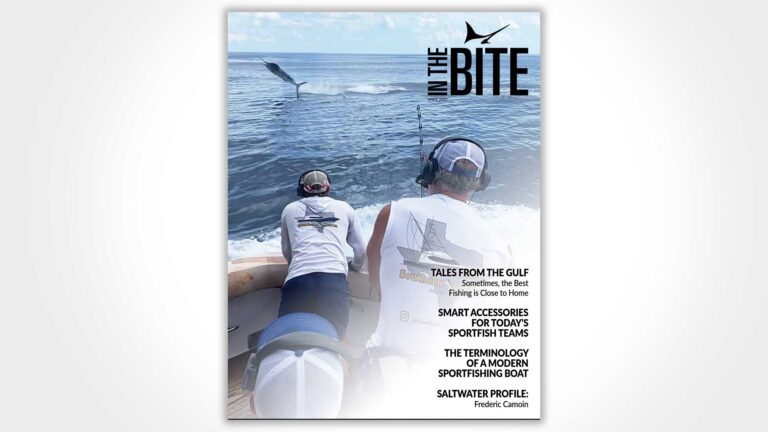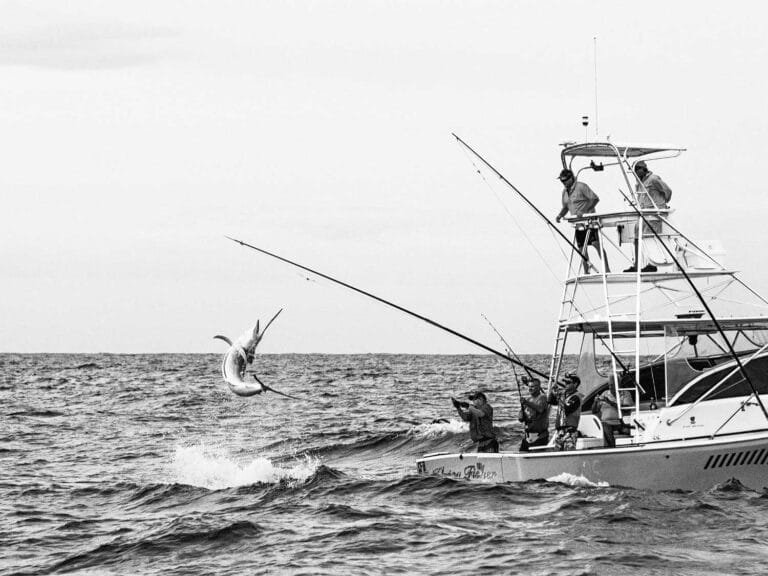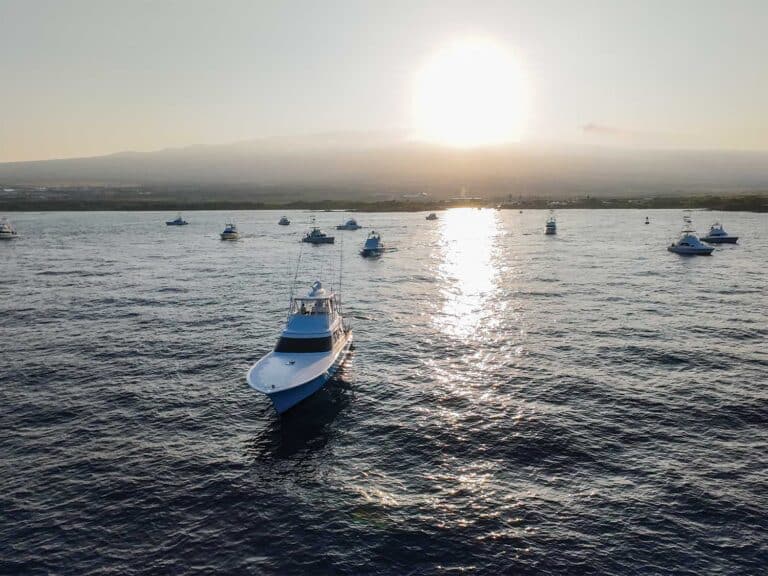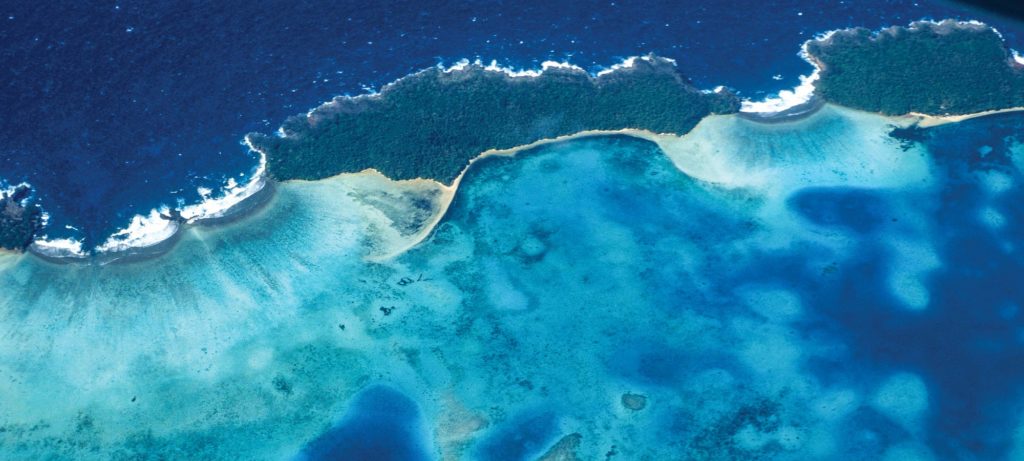
The Kingdom of Tonga lies deep in the heart of the South Pacific. Composed of more than 170 islands, these distant lands are a marlin fisherman’s ultimate dream destination. Since the publication of his encyclopedic book, Blue Marlin Magic, Capt. Steve Campbell has released another 450 or so blues as he continues to climb well beyond the 2,000-marlin mark. But no matter how good you are, you need a great fishery to achieve numbers like these. The equatorial Pacific Ocean features three major west-flowing currents: the North Equatorial, Equatorial and South Equatorial, sandwiching two east-flowing counter-currents. Earth’s rotation causes these currents to spiral as they flow past each other in opposite directions, sucking cold, nutrient-laden water from the deep into the sunlit surface layers in a process called equatorial upwelling. The Indian and Atlantic oceans each have only two west-flowing currents and one counter-current, resulting in much less upwelling than in the Pacific. Over vast areas, phytoplankton species blossom, providing the foundation for an entire enhanced food web, culminating in large numbers of apex predators such as marlin. Place some islands and seamounts in the paths of the currents, throw in a deep trench and you have all the ingredients to attract and hold blue marlin and other pelagic wanderers.
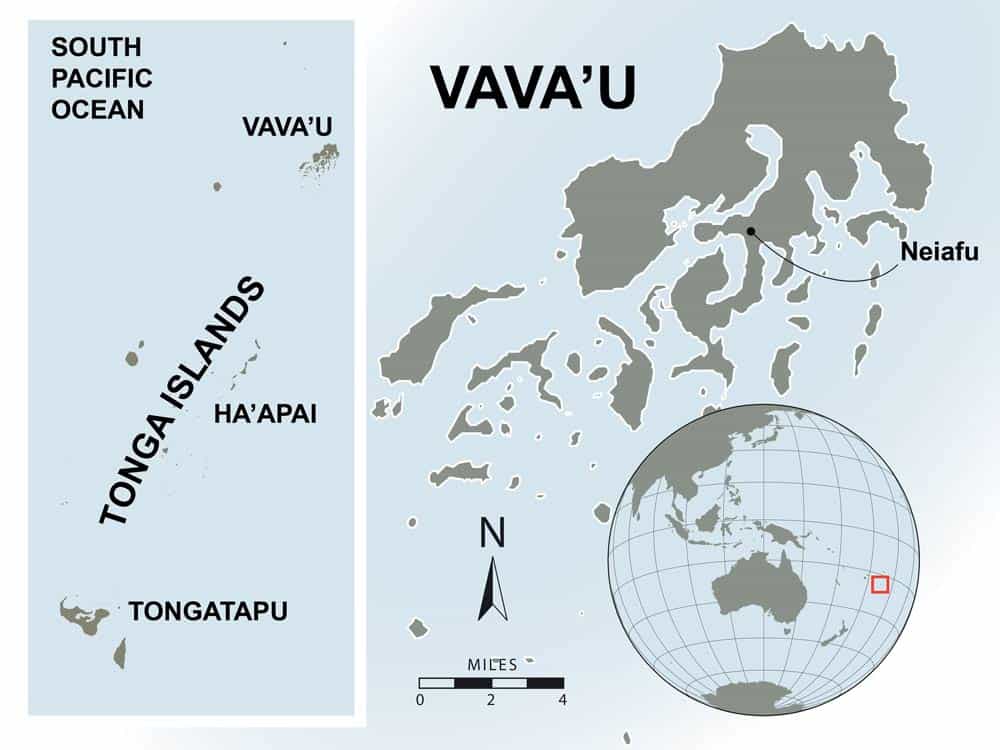
The Kingdom of Tonga sits squarely across the South Equatorial Current, with 170 or so islands composing three main groups: Vava‘u, Ha‘apai and Tongatapu. These stretch north to south over some 500 miles of open ocean. Tonga sits on the eastern edge of the Indo-Australian tectonic plate, under which the Pacific Plate plunges, forming the 34,000-foot-deep Tongan Trench. The descending plate causes tremors throughout the volcanic and flat-topped islands and coral atolls that make up the kingdom. Some islands submerge and reappear at the whim of local volcanic activity. Seamounts abound in this neighborhood, particularly a north-south series of underwater mountains roughly 20 miles west of Vava‘u. The South Equatorial Current boils, swirls and undulates through and around the trench’s abrupt vertical walls, as well as the islands and seamounts, creating persistent eddies, rips and localized cool-water upwellings.
Tonga is a veritable blue marlin paradise that experiences seasonal spikes in abundance but holds enough fish to target them year-round. The area also produces sizable yellowfin and dogtooth tuna, wahoo, shortbill spearfish, sailfish, black marlin and swordfish. An inshore fishery for giant trevally supports several local guide operations as well.
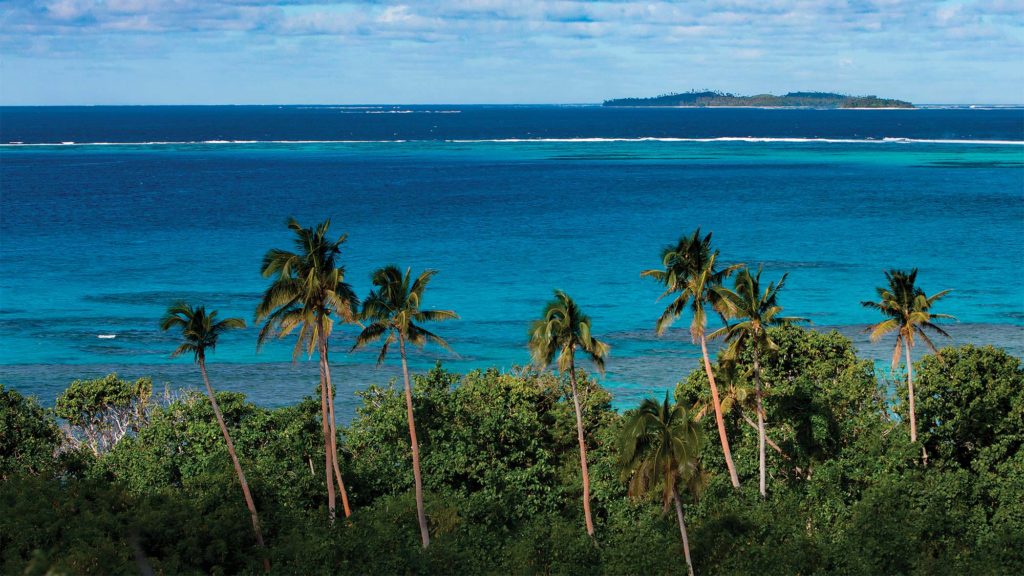
Stunning views of the Haapai group of islands in central Tonga from Nomuka Iki.
Pioneers of the Sport Fishery
Tonga is the last Pacific monarchy, never colonized or subjugated by another nation. The monarchy makes land available to its citizens, who are able to subsist thanks to the mild climate and rich soil. The tourist industry is extremely low-key compared to more developed destinations like Fiji. Traditional dance and social mores, such as kava-drinking clubs, continue to thrive. The younger generation tends to migrate to New Zealand, Australia and the United States.
Expats, mostly from Europe and New Zealand, made their way here during the 1970s and ’80s. The first licensed charter captain to fish Tonga was New Zealander Mike Marshall, who put two boats into service in the Vava’u group in the 1980s. Unfortunately, the very low number of visitors to Tonga put him out of business within a year. Oklahoman Paul Mead, after working widely in fisheries development in the tropical Pacific for the Secretariat of the Pacific Community (then called the South Pacific Commission), had by then settled in Vava’u, home to his lovely wife, Alisi, who grew up there. He built his own fishing boat, Dora Malia, started fishing commercially in 1988 and was licensed for charter fishing by 1989. During this same year, Bill Hall, an experienced captain from New Zealand, fished Vava’u on his Te Ariki Nui, and returned again in 1990. He published a book detailing his pioneering efforts in Tonga, simply titled Marlin Fishing.
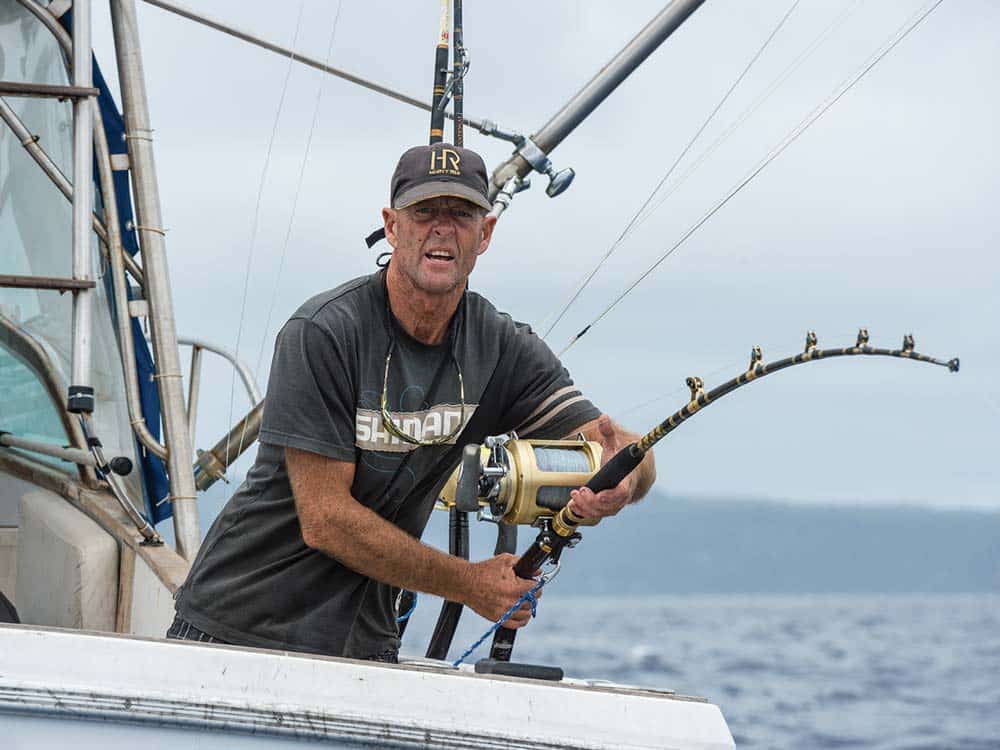
Tonga fishing
Meanwhile, Mead was consistently catching blue marlin and everything else that swims around Vava’u on his charters, becoming well established during the early 1990s. Capt. Keith McKee, from New Zealand, joined him in 1991 aboard Kiwi Magic. These two skippers truly put Vava’u on the global map as a top blue marlin destination in the South Pacific, and both are still operating their boats to this day. I first met Mead in 1996 at his Ikapuna store in Neiafu, the main town in Vava’u, where I was shocked to find a tackle shop packed with all of the latest marlin technology in the middle of nowhere. Two years later, in that same shop, I listened to newly arrived Campbell detailing a fight with a grander that hadn’t gone their way. Two other Kiwis — Capt. John Going on Delray and Capt. Dave Mair aboard Zeus — also contributed significantly to these early days of blue marlin fishing in Tonga. By 2000, five charter operations were plying the waters around Vava’u, catching noteworthy numbers of blues.
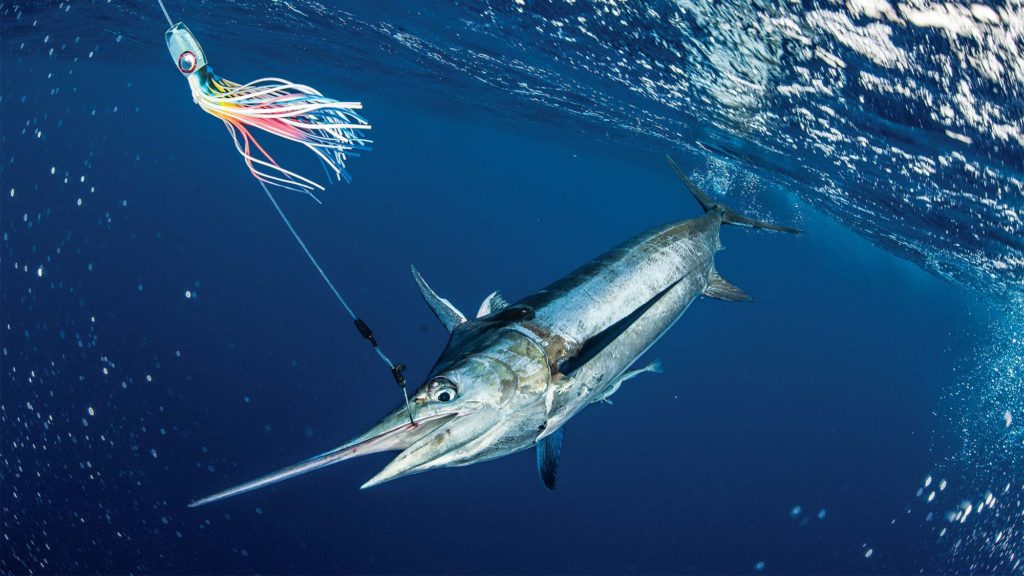
Blue Marlin Magic
Campbell was unique among this group. He bought a lagoonfront property on remote Hunga Island, accessible only by boat, and set out to establish the first full-service big-game fishing lodge in the South Pacific. One could nearly throw a stone to the drop-off from his location. Five minutes from the mooring off the beach of his Ika Lahi International Gamefishing Lodge, clients gaze at a full spread in the wake. Since 2000, Steve has employed several boats. His present ride is Blue Marlin Magic, a 34-foot Luhrs that is ideally suited to the local situation. He has released 2,153 blues and counting, and he knows every crack, bump and indentation in Vava’u and beyond.
I had the good fortune to hang around Vava’u in my 41-foot sloop Elan, itself rigged for big-game fishing, between 1996 and 2002. I had sailed out to the South Pacific from my home base in Islamorada, in the Florida Keys. I met Campbell, Mead and McKee in the 1990s, saw Club Hunga transformed into the Ika Lahi International Gamefishing Lodge and spent many days on the water with Campbell and Mead. I wrote features in the May and November 1999 issues of Marlin about the blue marlin potential of the area, and an article in the July 2002 issue detailed a billfishing odyssey that Capt. Skip Nielsen and I undertook. We sailed Elan from the Marshall Islands in Micronesia to Vava’u, culminating in a triple marlin hookup on the last day off South Bank, near Vava’u. We landed a striped marlin and a 170-pound blue, and dropped a second blue of similar size. I’m pretty sure it’s the only two-page spread of a sailboat ever to appear in Marlin. Then, in March 2003, I wrote a feature about Ika Lahi, by then an established success story, with Campbell on the verge of making extensive use of scanning sonar and underwater video, and continuing to record all data on spreadsheets each evening after entertaining guests over dinner at the lodge. Not surprisingly, Campbell finally retired from running the lodge in 2015 so he could concentrate full time on his lifetime passion, charter-fishing for blue marlin.
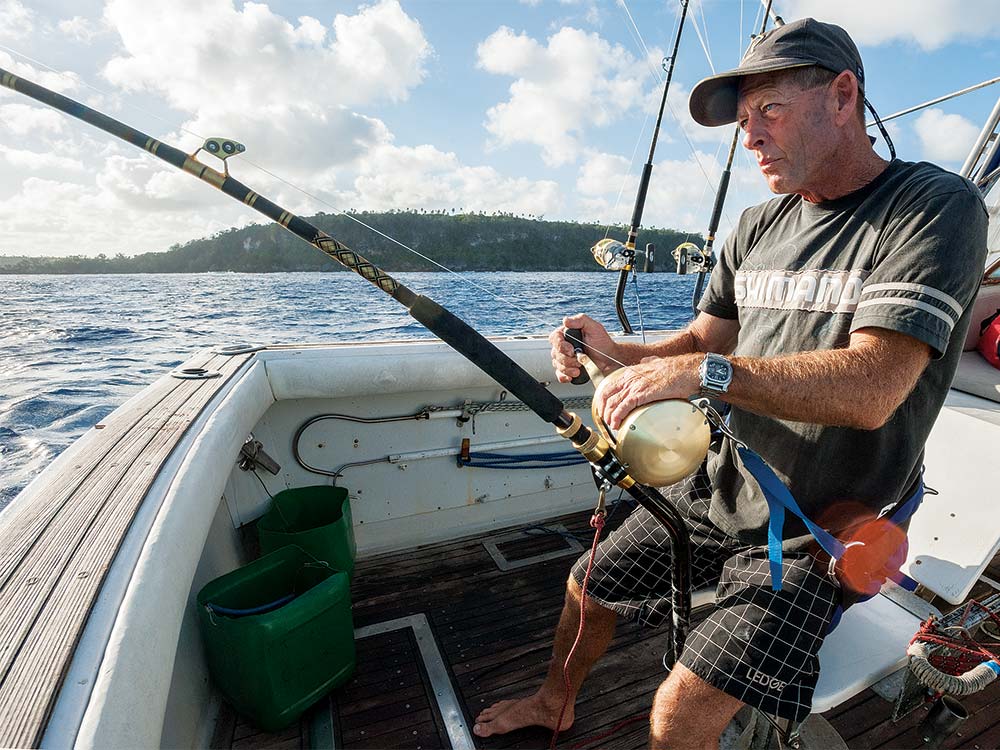
Tonga fishing
Here and Now
Fast-forward to the present. I have been in touch with Campbell and Mead in Vava‘u extensively, and here’s the scoop: The blue marlin fishing is as good as ever. The past three seasons have seen elevated numbers of 660- to 990-pound females, boosting the average size of blues captured from 220 pounds from 2000 through 2014 to 260 pounds in 2015 and 2017 and nearly 300 pounds in 2016. Otherwise, Campbell reports that the preponderance of smaller blues in the catch has crept upward over the 18 seasons he has fished Vava‘u. He further conveys his concerns about the growing number of Asian high-seas commercial vessels being licensed by Pacific island nations and the wide perception in the area that the biomass and average size of skipjack tuna has sharply declined. Vava‘u is no exception. On the other hand, like blue marlin, yellowfin tuna have remained abundant around this northern Tonga island group, with steady numbers of 130- to 165-pound fish during the December-to-February annual run. Conversely, schools of kawakawa appear to be sharply reduced in number and average size. Campbell also commented that numbers and average sizes of sailfish, mahimahi and wahoo have all declined over the past five seasons.
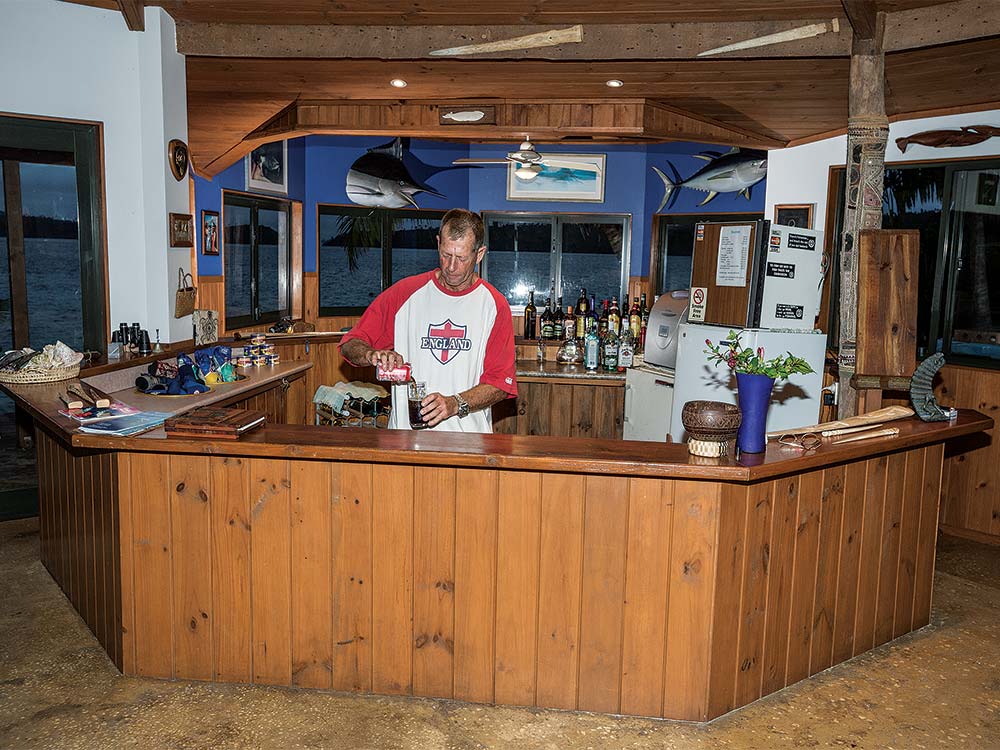
Tonga
Seasons and Styles
The conventional wisdom is that blue marlin numbers peak in Vava‘u from September through November, which is the spring season in this part of the world, hence the scheduling of annual tournaments during these months. That said, July and August can be red-hot, and there are blues present in good numbers during every month of the year. The resident charter boats work specific topography, birds and local FADs located halfway between Vava‘u and the western seamounts. Campbell in particular relentlessly works notches and other specific features along the length of an extensive area south of Vava‘u called the South Bank. He describes marking feeding groups of blue marlin pushing skipjacks, yellowfins and kawakawa into indentations of this vertical wall, usually with three larger individuals pushing from down deep and three smaller blues up shallow to suppress the tunas from running up over the top of the bank. The fish take turns rushing in to feed. If the bait school successfully bursts up over the top of the bank, the marlin do not waste energy giving chase into the shallows. They move back out off the wall to track down the next school of bait, and then maneuver and herd them back into the same exact spot in the wall.
There are a series of such spots along the South Bank. Campbell often live-baits in these circumstances, using a simple Panama rig with a small circle hook tethered to the bend of the main circle hook. He marks the largest individual marlin in the feeding group, inevitably one of the deep-set pushing fish, free-spools the bait down right into the big girl’s face and carefully drops back on the bite. His hookup rate is in the 90-something percentile using this method.
That said, the majority of his fishing time consists of trolling with lures, working the walls, seamounts and FADs, and following birds working surface-feeding tuna schools. Campbell continues his approximately 80 percent hookup rate overall on lure bites, using his technique of offsetting his single-hook stiff rigs slightly toward the inside of the spread. He does change to swinging hooks and other rigs in the absence of surface activity, and when blues are biting less aggressively. Bait-and-switch is another viable option, with reliable local availability of goggle-eyes that can be caught on sabiki rigs, particularly in rainy years.
So if you’ve ever daydreamed about chasing blue marlin in one of the most beautiful destinations in the world, where palm trees sway against sandy beaches and the bite is hot nearly year-round, consider the Kingdom of Tonga, where incredible experiences await.
Getting There
Flights
From the United States and Australia, the best way to get to Vava‘u is via Fiji Airways to Nadi, Fiji, and then from Nadi to Vava‘u. Travelers coming from New Zealand might want to fly into Tonga’s capital, Nuku‘alofa, and then take the local commuter airline Real Tonga to Vava‘u. Note that Nuku‘alofa sustained severe damage from a hurricane this season and is far from up-to-speed.
Accommodations
The situation with accommodations in Vava‘u has been dynamic over the years, but through thick and thin, I can unequivocally recommend the Tongan Beach Resort. It is located on a lovely beach on an out island en route between the main town and harbor, Neiafu, and the fishing grounds. The somewhat more exclusive Reef Resort also comes highly recommended. Capt. Paul Mead also reports guests being happy at Mystic Sands. In Neiafu, try Boat House Apartments or the Puataukanave Hotel. For a truly exotic, remote out island experience, check out Mounu Island Resort. Your captain can pick you up directly from the piers of any of the beachfront resorts. If you stay in town, you can board directly at the dock.
Other Things to Do
Vava‘u is famous for its seasonal humpback whales, traveling to the island group from Antarctica to breed and calve. A number of whale-watching operations provide quality outings, and your resort can set this up for you. The whales swim into the inner passageways of the island group, so you can actually see humpbacks lolling around right off the beach. The scuba diving and snorkeling is superb. General exploring, for example to Swallow’s Cave and Mariner’s Cave, is truly memorable and unique. Cultural events and crafts, including traditional dance, kava drinking, carvings, pandanus weaving, tapa cloths and more, are readily available and widespread. This is not a recent resurgence, because the islands have never been colonized or interrupted in the first place.
Fishing
The pioneers are now in their 70s and are slowing down. Mead operates Dora Malia privately these days. You should stop at his Ikapuna store and have a coffee with this absolute legend and storehouse of local information. Capt. Keith McKee still runs offshore fishing and whale-watching charters. Capt. Steve Campbell can fairly be termed the shaker and mover, running wide open and catching the hell out of blue marlin.
